AI Visitors Visit Fewer Pages and Bounce More Often Than Traditional Search Visitors
Unfortunately, we can’t even validate or dispute those claims, because Google doesn’t give us the ability to differentiate between AI-powered search traffic and traditional search traffic in Search Console or analytics tools. But we can assess user clicks from...
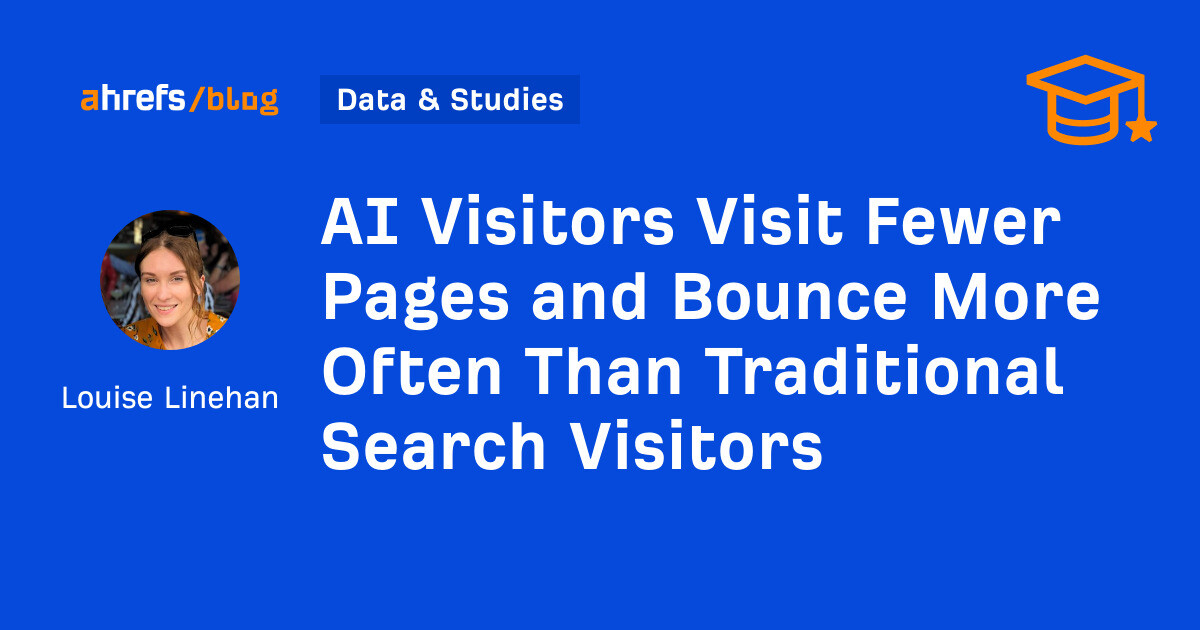
Google is forever telling us that AI search is better quality… When they [users] get to a decision to click out, it’s a more highly qualified click… What we hope to see over time—and we don’t have any data to share on this—is more time spent on site, which is what we see organically in a much more highly qualified visitor for the website. “What you see with something like AI Overviews, when you bring the friction down for users, is people search more and that opens up new opportunities for websites, for creators, for publishers to access. And they get higher-quality clicks. Unfortunately, we can’t even validate or dispute those claims, because Google doesn’t give us the ability to differentiate between AI-powered search traffic and traditional search traffic in Search Console or analytics tools. But we can assess user clicks from other major AI platforms… and that’s exactly what we’ve done. We’ve analyzed 81,947 sites to understand the quality of AI traffic and user behavior, vs. search and overall user averages. Here’s what we’ve found… We studied the traffic of ~82K websites between May and June 2025, to explore how user behavior changes depending on where visitors come from—search, AI, or “all” channels. By looking at user behavior metrics like average page visits, visits per session duration, time on site, and bounce rate, we were able to perceive more about the quality of “AI traffic”. Throughout, I’ll refer to the channels as Search traffic, AI traffic, and Overall traffic: Visitors from common AI platforms like ChatGPT and Perplexity visit 4 pages on average. That’s 1.2 fewer pages than search visitors, and 1.5 fewer than overall visitors. AI users also browse less deeply. We analyzed average session duration divided by average page duration, and found that AI users view significantly fewer pages per unit of session time (2.27) compared to Search (2.79) and Overall (2.99). That said, AI visitors do spend slightly longer on site–eight seconds longer, to be precise—but as we’ve already seen, they browse fewer pages overall. This means their time is more concentrated on a select few pieces of content–their sessions are longer in duration but shallower in depth. One interpretation of this is that AI users have clearer intent. They’ve already done their research via AI, so they land with specific goals and a better idea of what they’re looking for–they don’t need to click around to find it. Our data also shows that AI visitors are 4.1% more likely to bounce than a search user, and 5.4% more likely to bounce than the average user overall. This reinforces the notion that AI users have less intent to navigate and explore. If a user lands, spends 60–90 seconds and leaves, there are two possible reasons: 1. They got what they came for The user visited the site and it delivered well on expectation. We’ve seen this to be the case–our AI visitors convert at a 23x higher rate than our organic search visitors. 2. They were dissatisfied with the answer and left On the other hand, higher bounces can also, of course, signal dissatisfaction. If what a user sees doesn’t immediately match their expectations, they bounce–especially if the content or on-site experience is not yet designed for those users. So, is AI traffic really better quality? From a user behavior perspective, not quite. The only metric AI users won was time on site–and not by much. High bounces, low pages per session, and high time on site points to information validation or “one-and-done” behavior. That said, AI traffic arguably drives more “unplanned” discovery. If users engage briefly and leave, that’s not necessarily a poor signal, just a different context. And, of course, there’s the matter of conversions. As per our “anecdata” above, we have seen higher conversion rates (~12%) from AI, and so have others. Vercel is managing 10% CVRs from AI, and AI is Tally’s largest acquisition channel–helping them boost ARR by $1M. We’ve only just released conversion tracking in Ahrefs Web Analytics, but as soon as we have enough data, I’m hoping to dig into AI conversions. Until then, I’ll keep tracking AI data and sharing what I find.

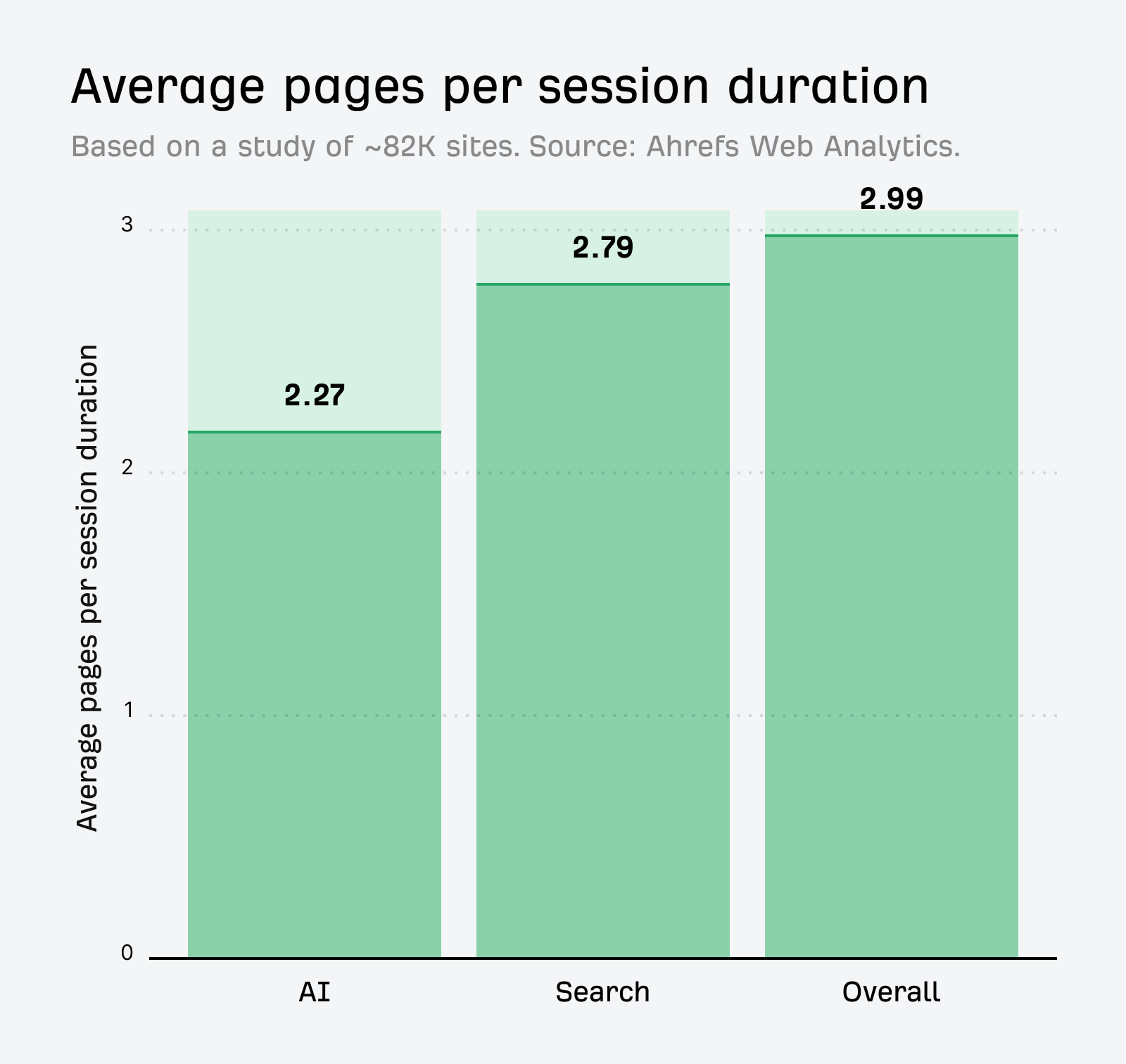
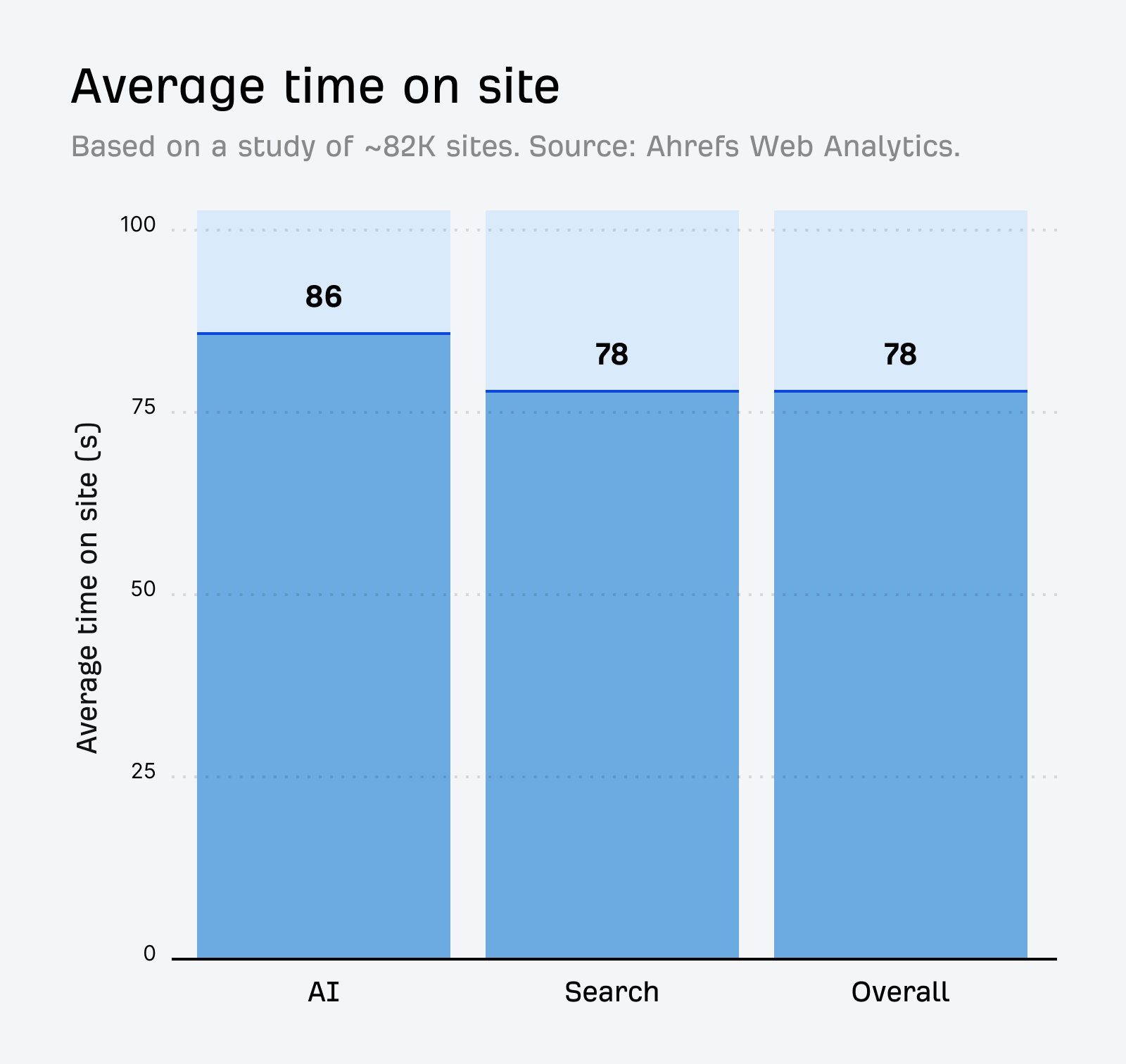
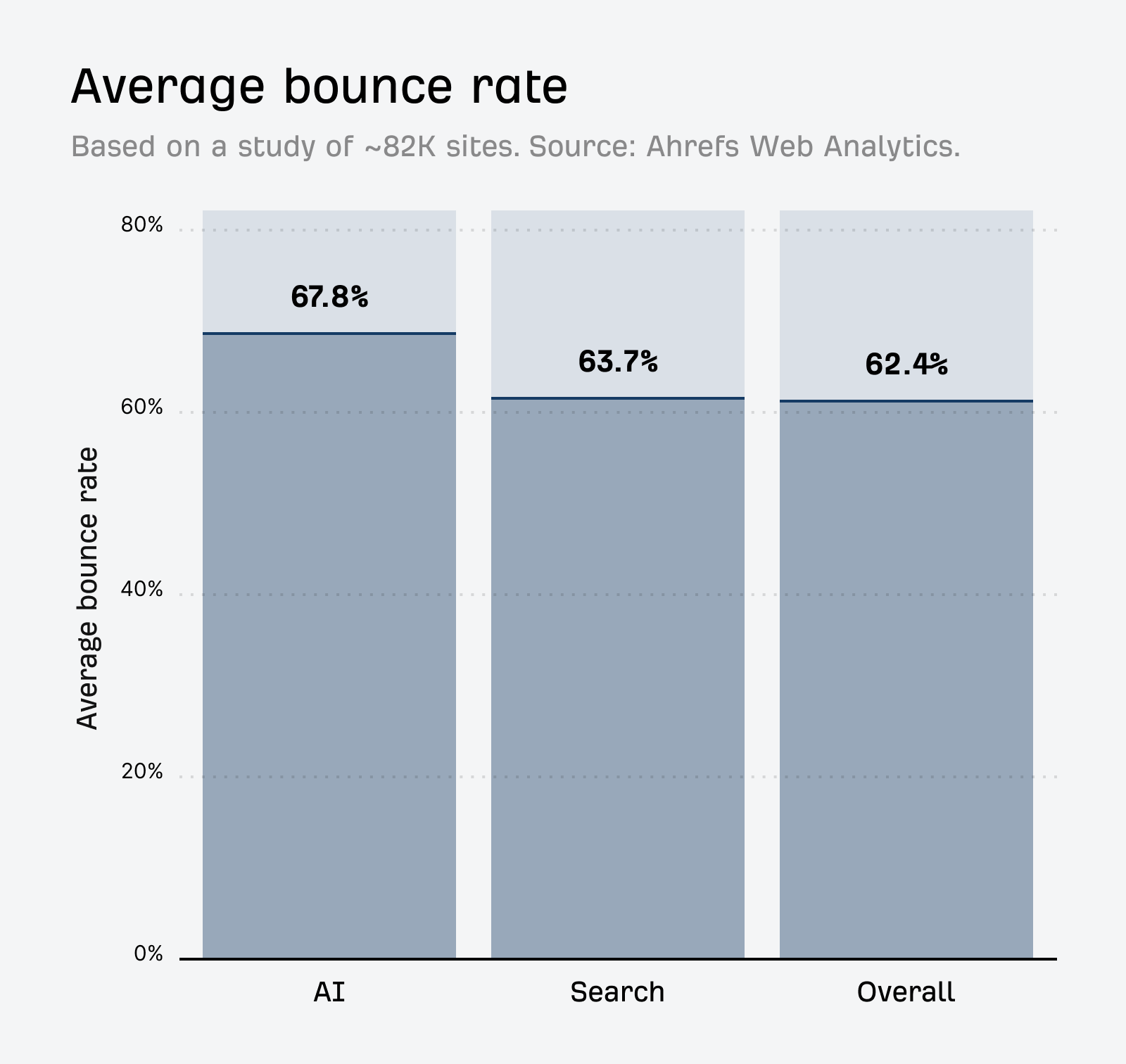
Wrapping up

 Konoly
Konoly 







![Google AIO: 4 Ways To Find Out If Your Brand Is Visible In Generative AI [With Prompts] via @sejournal, @bright_data](https://www.searchenginejournal.com/wp-content/uploads/2025/03/featured-572.png)

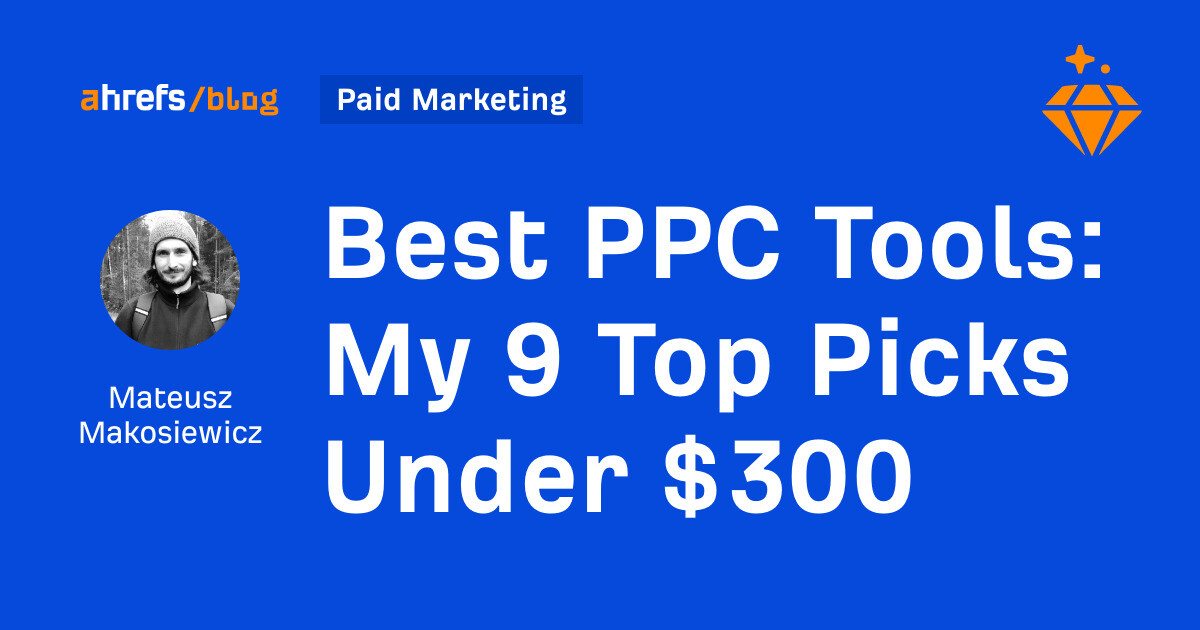
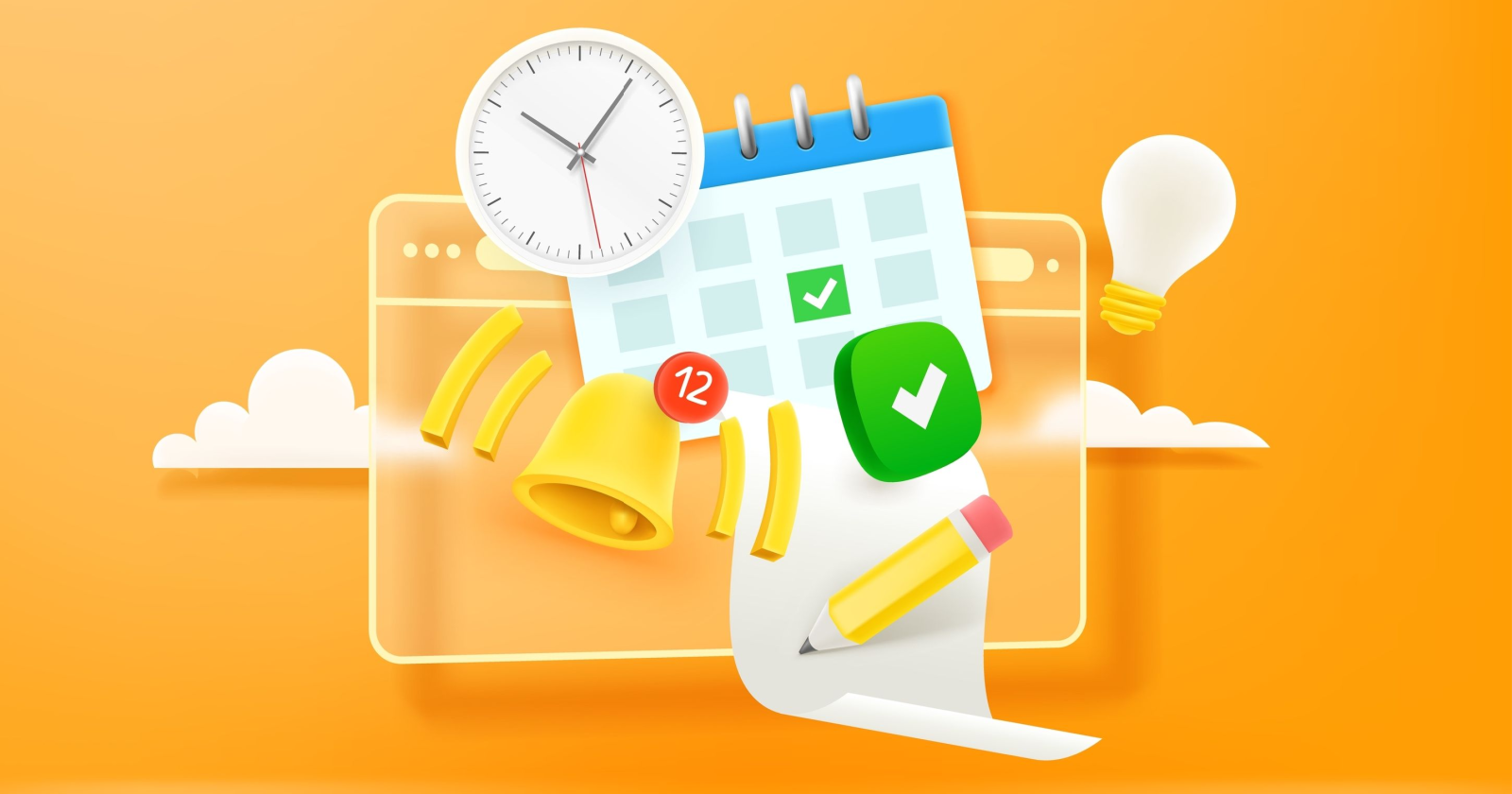
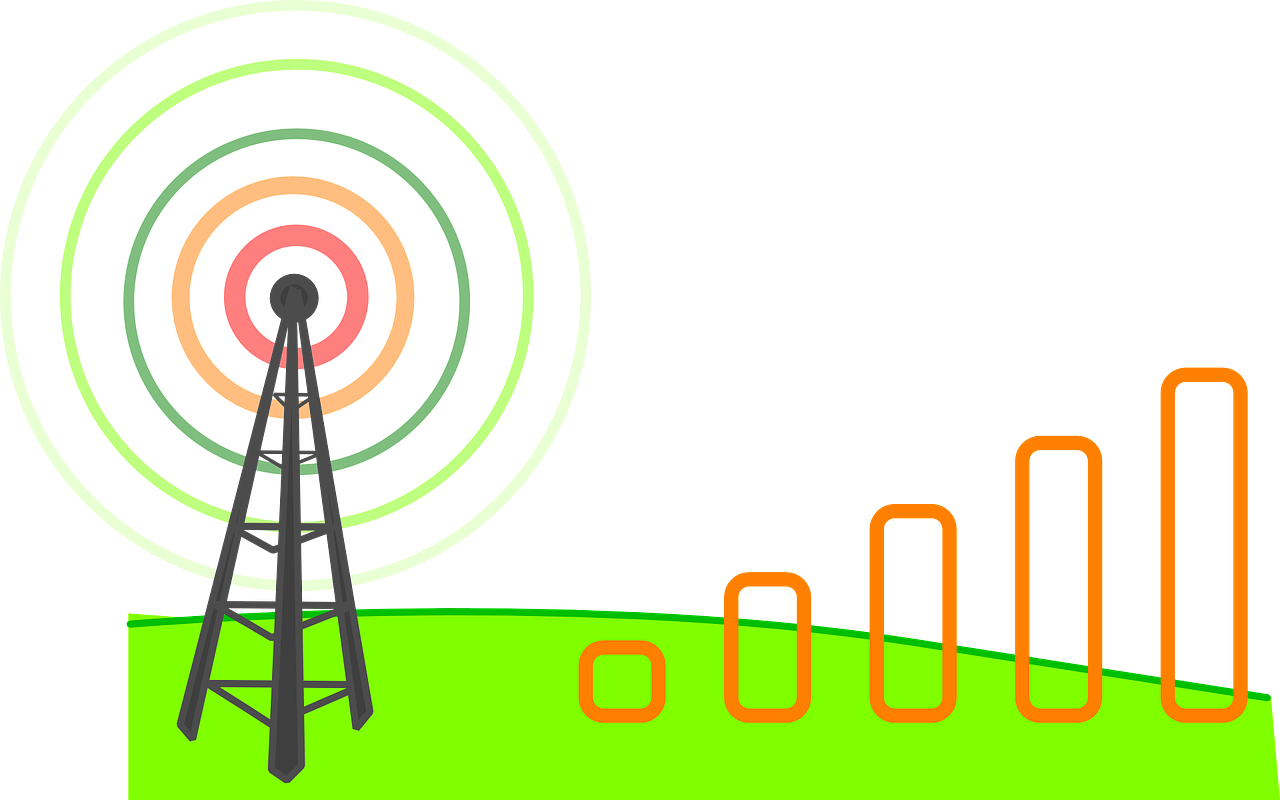







![The 2026 AI Search Benchmark Every SEO Leader Needs [Webinar] via @sejournal, @lorenbaker](https://www.searchenginejournal.com/wp-content/uploads/2025/11/1-259.png)












